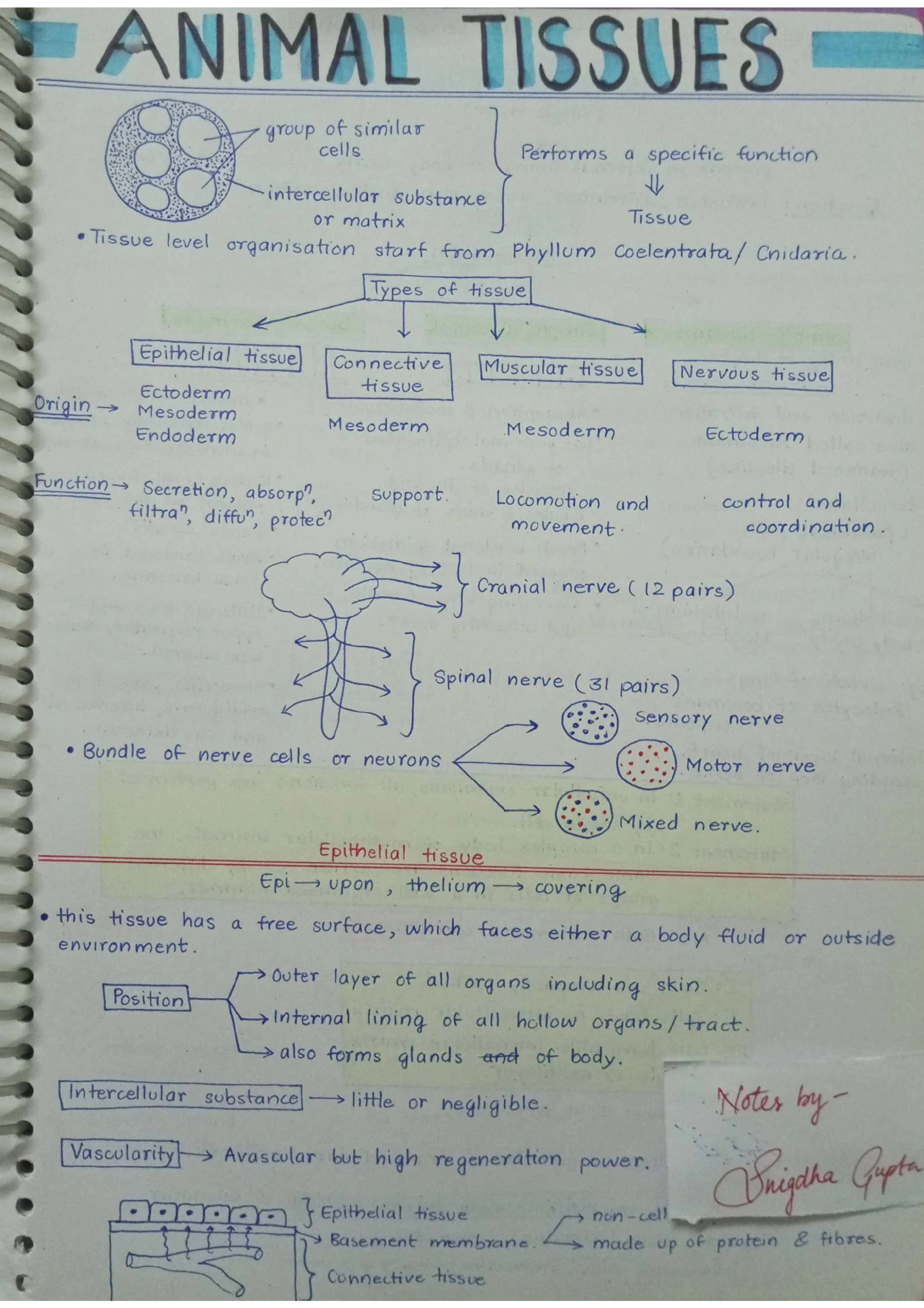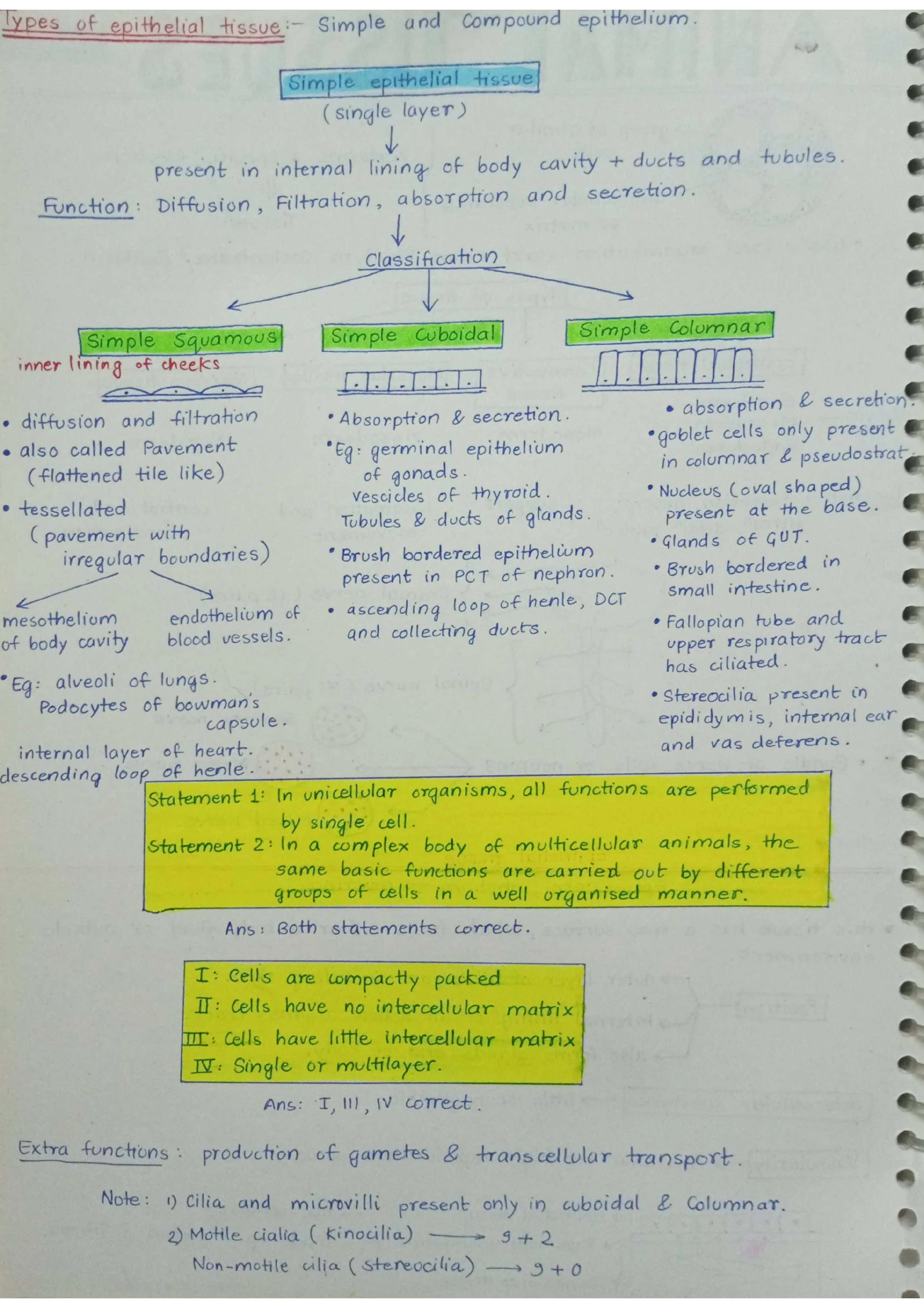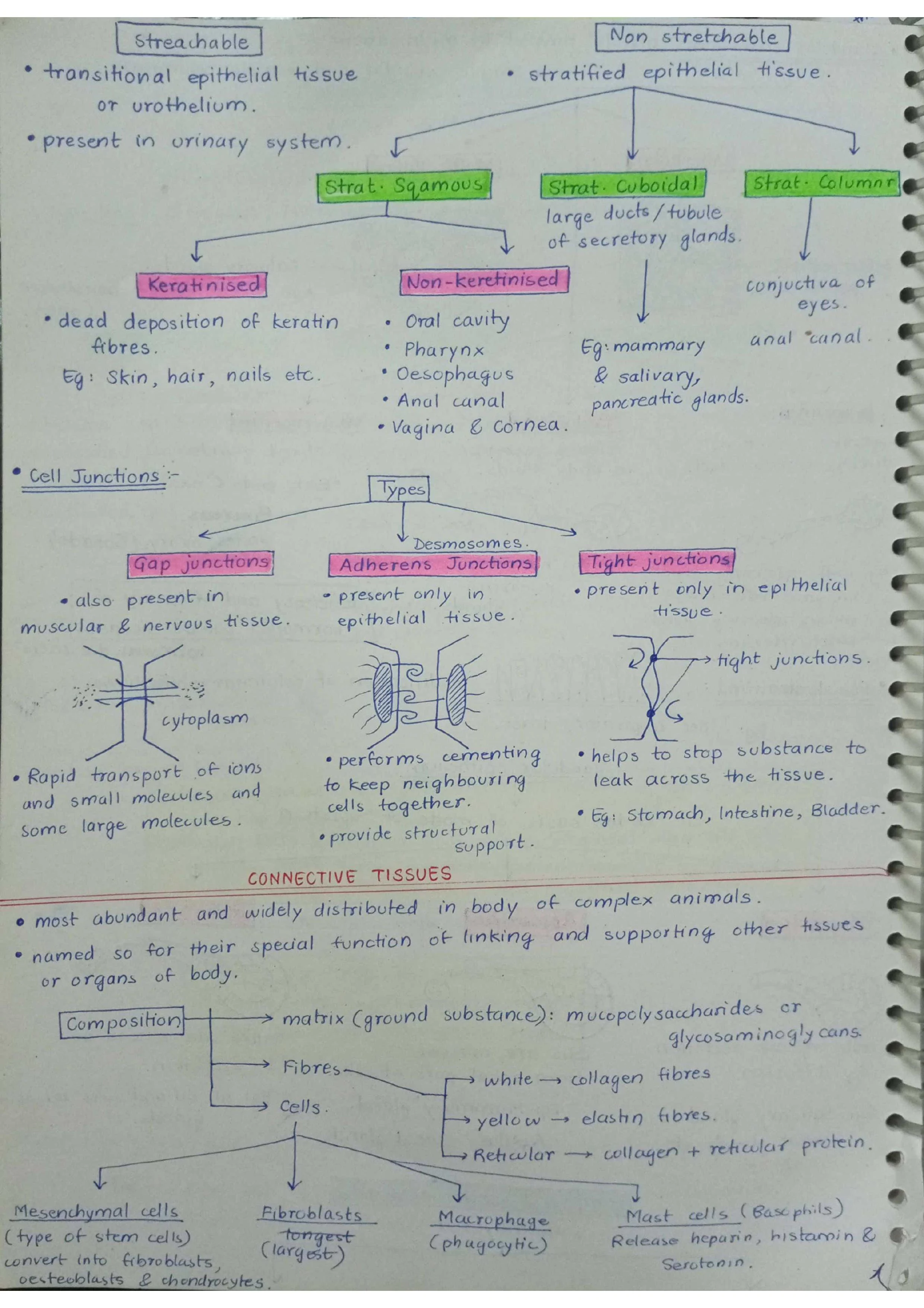Introduction:
➡️Multicellular animals, from the tiniest insects to majestic whales, are composed of trillions of microscopic building blocks called cells.
➡️These cells are grouped together based on their structure and function to form specialized tissues, which are the foundation of all organs and systems within the animal body.
➡️In this article, we will explore the four main types of animal tissues: epithelial, connective, muscle, and nervous tissue.
1. Epithelial Tissue: Covering and Lining
Key Characteristics:
➭Covers the body's surface (skin) and lines its organs and cavities (lining of the digestive tract, lungs).
➭Forms a protective barrier against pathogens and regulates the passage of substances (absorption in the intestines).
➭Tightly packed cells with minimal intercellular space for efficient barrier function.
➭Classified based on the number of cell layers (simple or stratified) and cell shape (squamous, cuboidal, columnar).
Examples:
- Skin
- Lining of the digestive tract, respiratory system, and urinary system
- Glands (sebaceous, sweat)
2. Connective Tissue: Binding and Support
Key Characteristics:
➭Provides support, structure, and connection to other tissues and organs (bones, tendons, ligaments).
➭Contains a diverse range of cells and a non-living matrix that varies in consistency (loose connective tissue, dense connective tissue, specialized connective tissue).
➭Offers flexibility (ligaments) or rigidity (bone) depending on the specific type.
Includes several specialized forms:
➭Cartilage: Provides flexible support (ears, nose)
➭Bone: Provides rigid support and mineral storage (skeleton)
➭Blood: Transports oxygen, nutrients, and waste products (circulatory system)
➭Adipose tissue: Stores energy (fat)
Examples:
- Bones
- Cartilage (ears, nose, joints)
- Tendons (connect muscles to bones)
- Ligaments (connect bones to bones)
- Blood
- Adipose tissue (fat)
3. Muscle Tissue: Movement and Locomotion
Key Characteristics:
➭Responsible for movement, contraction, and propulsion (skeletal muscles for voluntary movement, smooth muscles for involuntary actions like digestion).
➭Highly specialized cells containing contractile proteins (actin and myosin) that generate force.
Classified into three main types:
➭Skeletal muscle: Attached to bones, controlled consciously (voluntary), striated (banded) appearance.
➭Smooth muscle: Found in internal organs, not under conscious control (involuntary), non-striated (no bands).
➭Cardiac muscle: Unique to the heart, rhythmic contractions, striated.
Examples:
- Skeletal muscles (biceps, triceps, leg muscles)
- Smooth muscles (muscles in the digestive tract, blood vessels)
- Cardiac muscle (heart muscle)
4. Nervous Tissue: Communication and Control
Key Characteristics:
Responsible for receiving, processing, and transmitting information throughout the body, coordinating all bodily functions.
Composed of two main cell types:
Neurons: Specialized cells with long extensions (axons and dendrites) for transmitting electrical signals (nerve impulses).
Glial cells: Support and protect neurons, maintain the nervous system's environment.
Forms the brain, spinal cord, nerves, and sensory organs.
Examples:
- Brain
- Spinal cord
- Nerves
- Sensory organs (eyes, ears, nose, taste buds, touch receptors)


![Animal Tissues - Biology Short Handwritten Notes [PDF]📚 Animal Tissues - Biology Short Handwritten Notes [PDF]📚](https://blogger.googleusercontent.com/img/b/R29vZ2xl/AVvXsEjtUBlj5KRS_dmYf6TW1hU_qe-D3Idm9qxQrbiwPgvgwRoreYXv7Dh34MUBZlC-v5_DzPb5imPrpUNvGqGvUxhUlgv2P-zJQuk7KOwDf8mgRc2I0hwobg9ljeHysMVJgbEDdL_lGZ3CGrgMWQGH9rd1JvfQeUV3URwDGqfxfDspIPbmFtfPZtWfgd7qGFc/s16000-rw/Animal%20Tissues%20-%20Biology%20Short%20Handwritten%20Notes.jpg)








